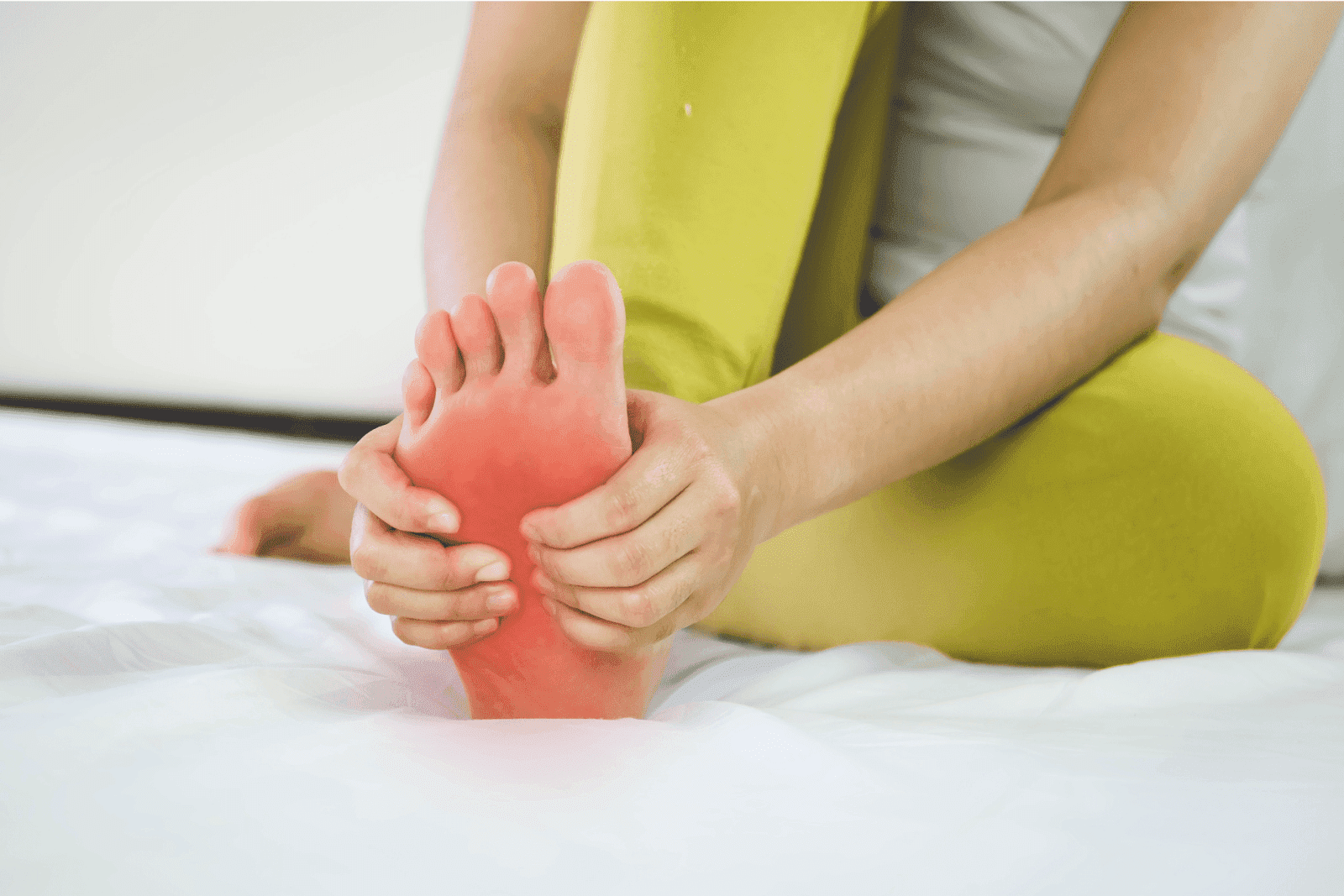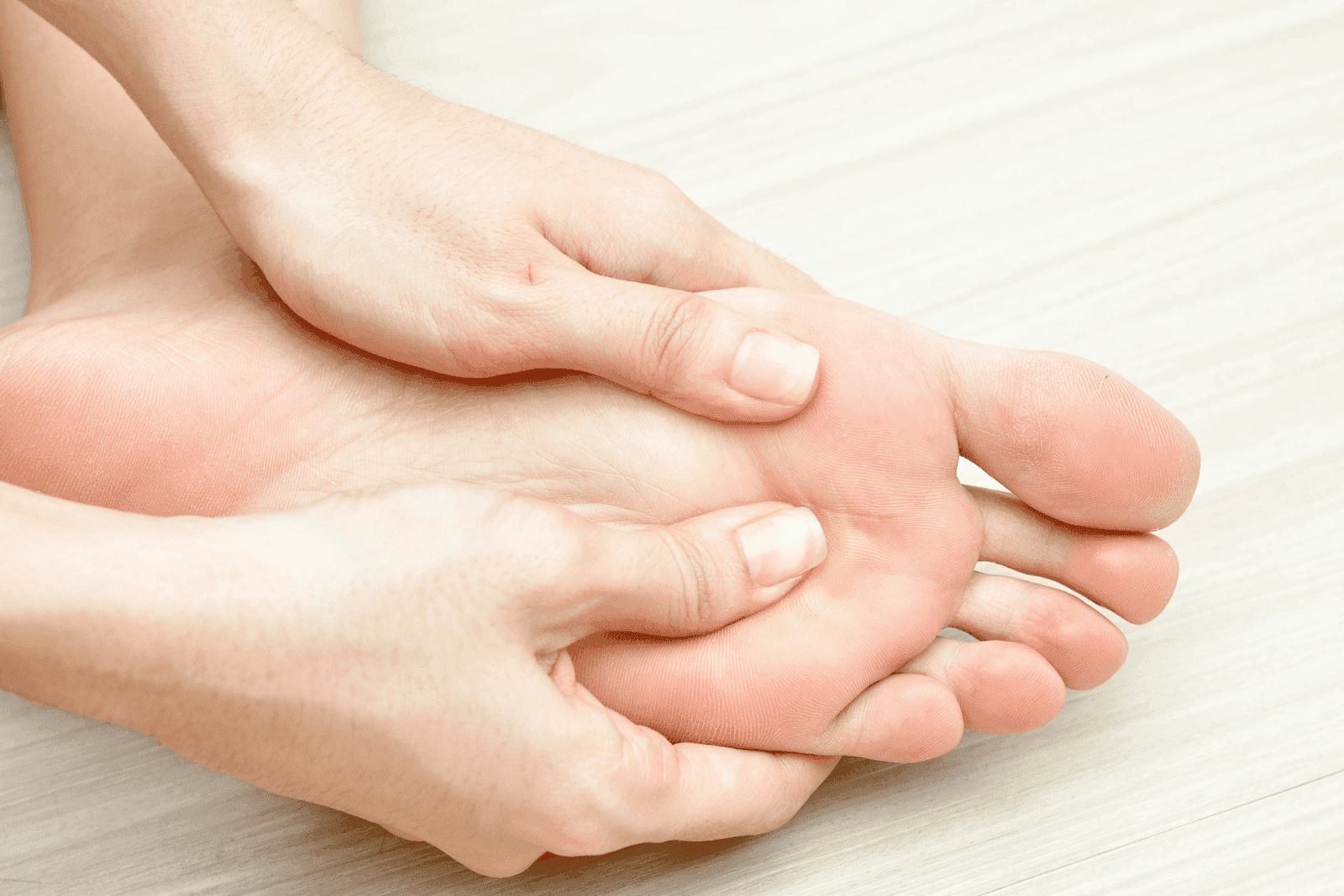Does Mounjaro Affect Fertility?
Understanding Mounjaro and Its UsesMounjaro is a prescription medication commonly prescribed for managing type 2 diabetes. It belongs to a class of drugs that help regulate [...]
Read More
Medically reviewed by Alan Lucks | MD, Alan Lucks MDPC Private Practice - New York on August 16th, 2025.
Foot pain can be debilitating, affecting your ability to move freely and enjoy everyday activities. Whether it’s a sharp sting with every step or a dull ache that worsens throughout the day, persistent foot pain is a signal that something isn’t right. Understanding the causes, knowing when to seek help, and finding the right treatment path are crucial first steps toward relief. This comprehensive guide will walk you through what might be causing your foot pain and how to get started on the road to recovery.
 Understanding the Causes of Foot Pain
Understanding the Causes of Foot PainFoot pain can arise from a variety of sources, ranging from minor injuries to chronic medical conditions. Identifying the root cause is essential for effective treatment. Here are some of the most common reasons people experience foot pain:
One of the most frequent causes of foot pain is injury, such as sprains, fractures, or bruises. Overuse injuries, like plantar fasciitis, occur when repetitive stress causes inflammation of the plantar fascia, the thick band of tissue running along the bottom of your foot. Athletes, runners, and those who spend long hours on their feet are especially prone to these issues. Additionally, improper footwear can exacerbate these injuries, as shoes that lack proper support or cushioning can lead to increased strain on the feet. It’s crucial for individuals engaged in high-impact activities to choose footwear that provides adequate arch support and shock absorption to help mitigate the risk of injury.
Structural abnormalities such as flat feet, high arches, or bunions can lead to uneven weight distribution and strain on certain parts of the foot. Over time, these issues may cause chronic pain and discomfort, especially when walking or standing for extended periods. Flat feet, for example, can result in a condition known as posterior tibial tendon dysfunction, which can lead to further complications if left untreated. Similarly, high arches can create excessive pressure on the ball and heel of the foot, leading to conditions like metatarsalgia. Custom orthotics and supportive footwear can often alleviate the discomfort associated with these structural issues, allowing individuals to maintain an active lifestyle without the burden of pain.
Several medical conditions can manifest as foot pain. Arthritis, including osteoarthritis and rheumatoid arthritis, can cause joint inflammation and stiffness. Diabetes is another major contributor, often leading to neuropathy, a nerve condition that causes burning, tingling, or numbness in the feet. Gout, a form of inflammatory arthritis, can also cause sudden and severe foot pain. In addition to these conditions, peripheral artery disease (PAD) can restrict blood flow to the feet, causing pain during physical activities. This condition often goes unnoticed until significant pain occurs, making it essential for individuals, especially those with risk factors like diabetes or high blood pressure, to seek regular medical evaluations. Early detection and management of these underlying health issues can significantly improve foot health and overall quality of life.
Not all foot pain requires immediate medical attention, but certain symptoms should prompt you to consult a healthcare professional promptly. Recognizing these warning signs can prevent complications and lead to faster recovery.
If your foot pain lasts more than a few days or worsens despite rest and home care, it’s time to seek medical advice. Chronic pain can indicate underlying issues that need professional evaluation. Conditions such as plantar fasciitis, tendonitis, or arthritis may be the culprits, and early diagnosis can lead to more effective treatment options. Additionally, keeping a pain diary can be helpful when discussing your symptoms with a healthcare provider, as it allows for a clearer understanding of patterns and triggers associated with your discomfort.
Visible swelling, redness, or deformity of the foot or toes may suggest an infection, fracture, or severe inflammation. These symptoms require prompt assessment to avoid further damage. In some cases, conditions like gout or cellulitis can cause such symptoms, leading to significant discomfort and mobility issues if left untreated. It’s also essential to monitor for any changes in skin temperature or texture, as these can provide additional clues about the underlying cause and severity of the condition.
If you cannot put weight on your foot without severe pain, this could indicate a fracture or serious soft tissue injury. Immediate medical evaluation is necessary. In such situations, imaging tests like X-rays or MRIs may be required to determine the extent of the injury. Additionally, understanding the mechanism of the injury—whether it was due to a fall, sports activity, or an accident—can help healthcare professionals tailor their approach to treatment and rehabilitation.
Persistent numbness, tingling, or burning sensations may be signs of nerve damage or neuropathy, conditions that need specialized care to manage effectively. These symptoms can stem from various causes, including diabetes, vitamin deficiencies, or even compression syndromes like tarsal tunnel syndrome. A thorough evaluation may involve nerve conduction studies or blood tests to identify the root cause, allowing for targeted interventions that can alleviate symptoms and improve overall foot health. Furthermore, lifestyle modifications, such as improving diet and exercise habits, may also play a crucial role in managing these conditions.
Once you decide to seek help, the next step is diagnosis. Traditionally, this would mean scheduling an in-person visit with a podiatrist or primary care doctor. However, advances in telehealth have made it easier and faster to get a professional opinion without leaving your home.
Telehealth services allow you to consult with medical professionals via video visits, making healthcare more accessible and convenient. One standout option is Doctronic.ai, an AI-powered doctor platform that offers free AI doctor visits and affordable telehealth consultations with licensed physicians 24/7 across all 50 states.
Doctronic’s AI doctor synthesizes the latest peer-reviewed medical research to provide fast, accurate, and personalized answers to your health questions. It remembers your medical history and offers treatment recommendations or second opinions in seconds. This makes it an excellent first step if you’re unsure about the severity of your foot pain or want guidance on whether you need to see a specialist.
During a telehealth session, you’ll describe your symptoms, pain location, and any relevant history. The doctor may ask you to perform simple movements or show your foot via camera to assess swelling or deformity. Based on this information, they can recommend next steps such as home care, prescriptions, imaging tests, or referral to a specialist.
If your doctor suspects an injury or underlying condition, they may order diagnostic tests to get a clearer picture:
X-rays: Useful for detecting fractures, bone spurs, and arthritis.
MRI: Provides detailed images of soft tissues like ligaments, tendons, and muscles.
Ultrasound: Helps evaluate soft tissue injuries and inflammation.
Blood Tests: Can identify infections, gout, or autoimmune conditions.
These tests help pinpoint the exact cause of your foot pain and guide appropriate treatment.
Treatment for foot pain depends on the diagnosis, but often starts with conservative measures. Here’s a breakdown of common approaches:
For mild to moderate foot pain, self-care can be very effective. Resting the foot, applying ice, elevating the leg, and taking over-the-counter pain relievers like ibuprofen can reduce inflammation and discomfort. Wearing supportive shoes or orthotic inserts may also help alleviate pressure on painful areas.
Strengthening and stretching exercises can improve foot function and reduce pain caused by structural issues or overuse injuries. A physical therapist can design a personalized program to address your specific needs.
In cases of arthritis or severe inflammation, doctors may prescribe stronger medications or corticosteroid injections to control symptoms.
If conservative treatments fail or structural problems are severe, surgery might be necessary. Procedures can range from correcting deformities to repairing torn ligaments or removing bone spurs.
When dealing with foot pain, timely and accurate medical advice is critical. Doctronic.ai stands out as a revolutionary AI-powered healthcare platform that combines the best of technology and medicine to deliver fast, personalized care. Here’s why it’s a great choice:
Accessible 24/7: Whether it’s a weekend or late at night, you can get answers anytime without waiting for an appointment.
Comprehensive and Up-to-Date: The AI draws on the latest peer-reviewed medical research, ensuring you receive the most modern and accurate information.
Personalized Care: Unlike generic online symptom checkers, Doctronic remembers your history and tailors its advice to you.
Affordable Telehealth Visits: If you need to speak with a licensed physician, Doctronic offers inexpensive video visits under $40, available in all 50 states.
Starting your journey with Doctronic can help you quickly understand your foot pain and decide on the best next steps, all from the comfort of your home.
 Preventing Future Foot Pain
Preventing Future Foot PainOnce your foot pain is under control, taking proactive steps can help prevent recurrence:
Wear Proper Footwear: Choose shoes that provide adequate support and cushioning, especially if you spend long hours standing or walking.
Maintain a Healthy Weight: Excess weight puts additional stress on your feet.
Stay Active: Regular exercise strengthens muscles and improves circulation, but balance activity with rest to avoid overuse injuries.
Practice Good Foot Hygiene: Keep feet clean and dry to prevent infections.
Address Problems Early: Don’t ignore new or worsening foot pain; early intervention can prevent chronic issues.
Foot pain that makes walking difficult is more than just an inconvenience—it can significantly impact your quality of life. Understanding the potential causes, recognizing when to seek help, and using modern tools like Doctronic.ai for fast, reliable medical advice can set you on the path to recovery. Whether your pain stems from an injury, structural issue, or medical condition, early and accurate diagnosis is key to effective treatment.
Don’t let foot pain hold you back. Take the first step today by getting the answers and care you need to walk comfortably again.
If foot pain is disrupting your life, don't wait for relief. Experience the future of healthcare with Doctronic, the #1 AI Doctor. Our AI-powered platform offers free, immediate medical advice, personalized to your unique history and symptoms. With over 10 million satisfied users, our service is designed to provide the most modern, comprehensive care at your convenience. For more in-depth assistance, our telehealth video visits connect you with licensed physicians 24/7 in all 50 states, at less than $40. Skip the line and talk to an AI Doctor now, for free. Your journey to pain-free walking starts here.
Most foot pain responds well to conservative treatment within 6-8 weeks when combining proper footwear, targeted exercises, and anti-inflammatory measures. Early intervention prevents chronic problems that may require invasive treatments like injections or surgery. If you're experiencing persistent symptoms or warning signs, Doctronic can help you determine the right treatment approach quickly.
Understanding Mounjaro and Its UsesMounjaro is a prescription medication commonly prescribed for managing type 2 diabetes. It belongs to a class of drugs that help regulate [...]
Read MoreUnderstanding Hydrocortisone Uses and DosagesHydrocortisone is a versatile medication primarily used to reduce inflammation and suppress the immune system in various [...]
Read MoreUnderstanding Zepbound and MounjaroWhen managing type 2 diabetes, patients often face a variety of medication options. Zepbound and Mounjaro are two such options gaining [...]
Read More